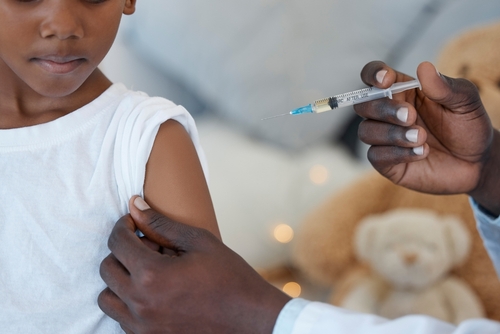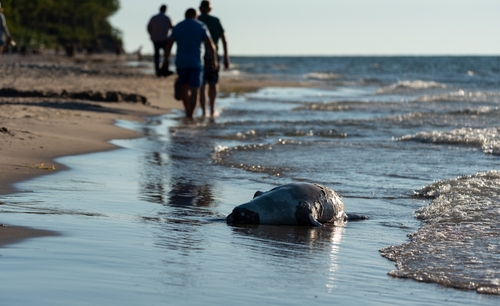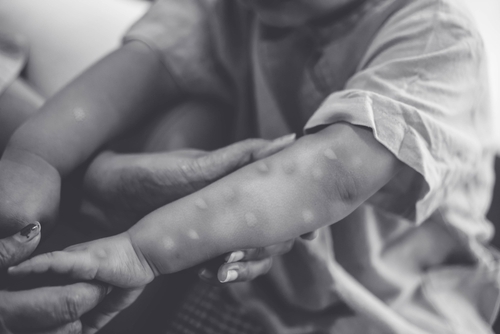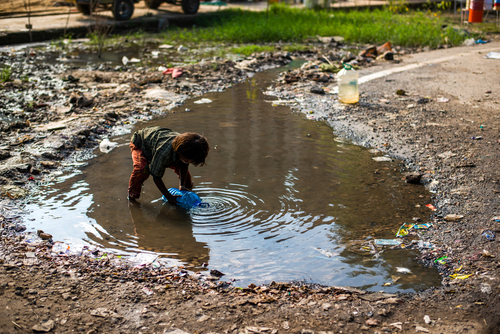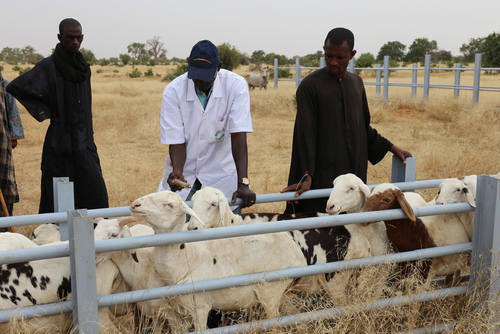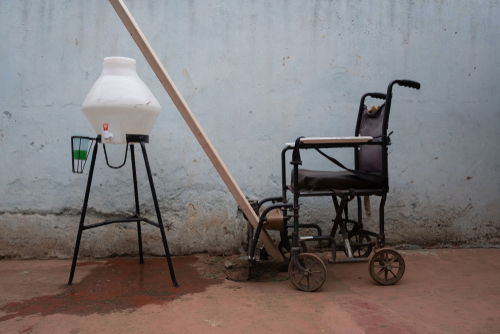December 18, 2023

OxygenForIndia initiative working to prevent future medical oxygen crises
The OxygenForIndia (OFI) initiative was launched by OHT and partners at the peak of India’s oxygen crisis in 2021. Since then, OHT researchers and collaborators, with the support of over 14,000 donors, have worked with the state governments of Uttar Pradesh and Karnataka to implement pilot projects that will eventually become a National Medical Oxygen Grid (NMOG). The NMOG will serve as an IT-based platform to monitor and track data-based decision-making related to medical oxygen availability and provision in health facilities. Advancements in the two state-wide pilot programs, as well as goals for the OFI initiative, are outlined in the OxygenForIndia impact report. [One Health Trust]
Contextualizing the fight to control the spread of antimicrobial resistance in India
OHT’s Dr. Ramanan Laxminarayan commented in a piece in Nature on the challenges related to the control of antimicrobial resistance (AMR) in India caused in part by the overuse of broad-spectrum antibiotics. Despite government initiatives like antimicrobial stewardship programs and regulations, issues persist, especially in rural areas with low resources. Additionally, while regulatory efforts are increasing, quality concerns in drug manufacturing persist. However, despite these challenges, experts, including Dr. Laxminarayan, are optimistic that increased awareness, local engagement, and lessons from COVID-19 will drive collective efforts to combat AMR. In this context, community awareness initiatives are growing, offering hope for change. [Nature]
Antibiotic prophylaxis after pancreatic surgery has no impact on the incidence of surgical site infections.
A retrospective cohort study investigated the association between postoperative antibiotic prophylaxis (AP) and the incidence of surgical site infections (SSIs) and other healthcare-associated infections (HAIs) in pancreatic surgery patients. There was no decline in the incidence of SSIs among patients who received AP at least 48 hours post-op; after adjusting for confounding, the analysis revealed that AP after 48 hours post-op had no significant impact on SSIs (OR = 2.13; 95% CI 0.76-5.99) or other HAIs (OR = 3.69; 95% CI 0.99-13.81). [Antimicrobial Resistance & Infection Control]
Convergent hypervirulent K. pneumoniae isolates demonstrate low virulence in mouse models.
A new study screened genomes of over 2,000 multidrug-resistant Klebsiella pneumoniae isolates from the United States and characterized the resistance and virulence profiles of 12 representative isolates. Convergent isolates were identified by screening isolates resistant to third-generation cephalosporins for at least one of four hypervirulent K. pneumoniae (hvKP) virulence genes (iucA, iroB, rmpA, or rmpA2). Approximately 90 percent of the screened isolates contained resistance factors for 3 or more antibiotic classes, with over 75 percent containing an extended-spectrum beta-lactamase (ESBL) gene. Further screening revealed that 1.8 percent of all isolates contained at least one hvKP virulence gene and were determined to be convergent. Animal models showed that despite all of the convergent isolates containing virulence genes, most had relatively low virulence levels, raising questions about the true virulence of these strains in humans and animals. [Nature Communications]
Antibiotic resistance genes spread through rivers.
Researchers characterized the microbial diversity of metagenomes extracted from the highly polluted Tijuana River in Mexico to assess the effects of frequent contamination due to inadequate sanitation infrastructure in the surrounding city of Tijuana. Water samples from the river were collected from an estuarine site and a site near the United States and Mexico border. Samples from the near-border site were dominated by bacteria associated with feces and sewage, while the estuarine samples were dominated by marine bacteria. Notably, the estuarine samples had higher proportions of fecal contamination on two days, both temporally associated with water influx from the near-border site. Antibiotic resistance genes (ARGs) were found in samples from both sites but were more concentrated at the near-border site, which is closer to urban centers than the estuarine site. The observation of microbial flow from one site to another points to the potential spread of ARGs through contaminated water, which might introduce new resistance mechanisms into previously unaffected human and animal communities. [Environmental Pollution]
Modified compartmental model can help expand current zoonotic disease surveillance efforts.
A systematic review highlighted the opportunities, barriers, and limitations of a practical framework that uses a Susceptible-Exposed-Infectious-Removed (SEIR) model for early zoonosis surveillance in the context of climate change. The SEIR model – a compartmental model used to simulate infectious disease dynamics – was modified to account for human-animal transmission and the effects of climate change. Researchers propose using this model as an extension of existing surveillance methods, such as serological and polymerase chain reaction (PCR) tests used to detect pathogens. Some barriers to integrating this framework widely include data-sharing challenges, particularly from an interdisciplinary standpoint, and a lack of international communication and cooperation. Experts recommend establishing a centralized global health hub to aggregate and integrate data from various sources and inform zoonotic disease control strategies, especially in resource-limited countries. [Advances in Climate Change Research]
Facilitators and barriers to achieving global cholera control goals
A new scoping review described the facilitators and barriers to community engagement and health system strengthening (HSS) – 2 goals outlined by the 2030 Global Task Force on Cholera Control (GTFCC) Roadmap – to decrease cholera deaths by 90 percent by 2030. Analysis of 44 cholera-related research publications revealed 4 key themes influencing HSS: 1) civil unrest; 2) health system cooperation with external actors; 3) maintaining functional capacity in the face of change; and 4) good governance and political will. Community engagement was notably influenced by building trust in the health system and growing social cohesion. Three factors identified at the community-health system interface were insecurity and community (barrier); cooperation and agreement (facilitator); and sociopolitical influences on trust building (facilitator). The implementation of HSS and community engagement interventions through the GTFCC Roadmap must consider these influences on the community-health system interface to effectively reduce the global burden of cholera. [BMJ Global Health]
Improved flooring in LMICs has a protective effect against parasitic and enteric infections.
A recent systematic review and meta-analysis quantified the association between improved household flooring in low- and middle-income countries (LMICs) and self-reported diarrhea or enteric or parasitic infections. A random-effects meta-analysis of 65 studies showed that households with improved flooring had lower odds of any enteric or parasitic infection. Overall, improved household flooring conferred protection against helminthic infections (pooled OR = 0.68; 95% CI 0.58-0.8), hookworm (OR = 0.53; 95% CI 0.36-0.77), bacterial or protozoan infections (OR = 0.92; 95% CI 0.75-0.9), and self-reported diarrhea (OR = 0.89; 95% CI 0.83-0.96). The potential of improved flooring to reduce the burden of enteric and parasitic infections must be further explored. [PLOS Global Public Health]
Estimating excess treatment failures and burden of suboptimal treatment among malaria patients
A new study estimated the proportion and the excess number of treatment failures associated with sub-optimal dosing with artemisinin-based combination therapy (ACT) of uncomplicated Plasmodium falciparum malaria. The subpopulations at the greatest risk of suboptimal ACT dosing were wasted children (children who are too thin for their height) under the age of five, patients with hyperparasitemia (> 100,000 parasites/µL), pregnant women, people living with HIV, and overweight adults. The excess treatment failures due to suboptimal ACT dosing were estimated to range between 0.23 and 0.52 million, 0.57 and 1.31 million, and 0.91 and 2.09 million among individuals at risk with drug efficacies of 98, 95, and 92 percent, respectively. Patients with hyperparasitemia comprised the subpopulation most affected by treatment failures (39.1 percent). A combination of malaria diagnosis and parasite count could improve malarial outcomes in patients with hyperparasitemia. [PLOS Global Public Health]
Characterizing the epidemiological and resistance profiles of fungal isolates from high-risk hospital areas in Iran
Researchers determined the epidemiological and susceptibility profiles of saprophytic fungi collected from surfaces in departments with high-risk patients in four teaching hospitals in Iran between May 2020 and May 2022. Out of 400 environmental samples, 152 were culture-positive for fungi, of which more than 25 percent contained more than 1 isolate. The most isolated fungal species were Aspergillus flavus, Candida albicans, and Mucor spp. Candida spp. were commonly found on ventilators, hospital beds, and faucet taps, while Mucor and Aspergillus spp. were isolated from floors, doors, windows, and air conditioners. Antifungal susceptibility testing revealed that many filamentous fungi were resistant to antifungal agents and that Candida spp. were less susceptible to the agents fluconazole and itraconazole. [ASM Microbiology Spectrum]
Image from Canva

